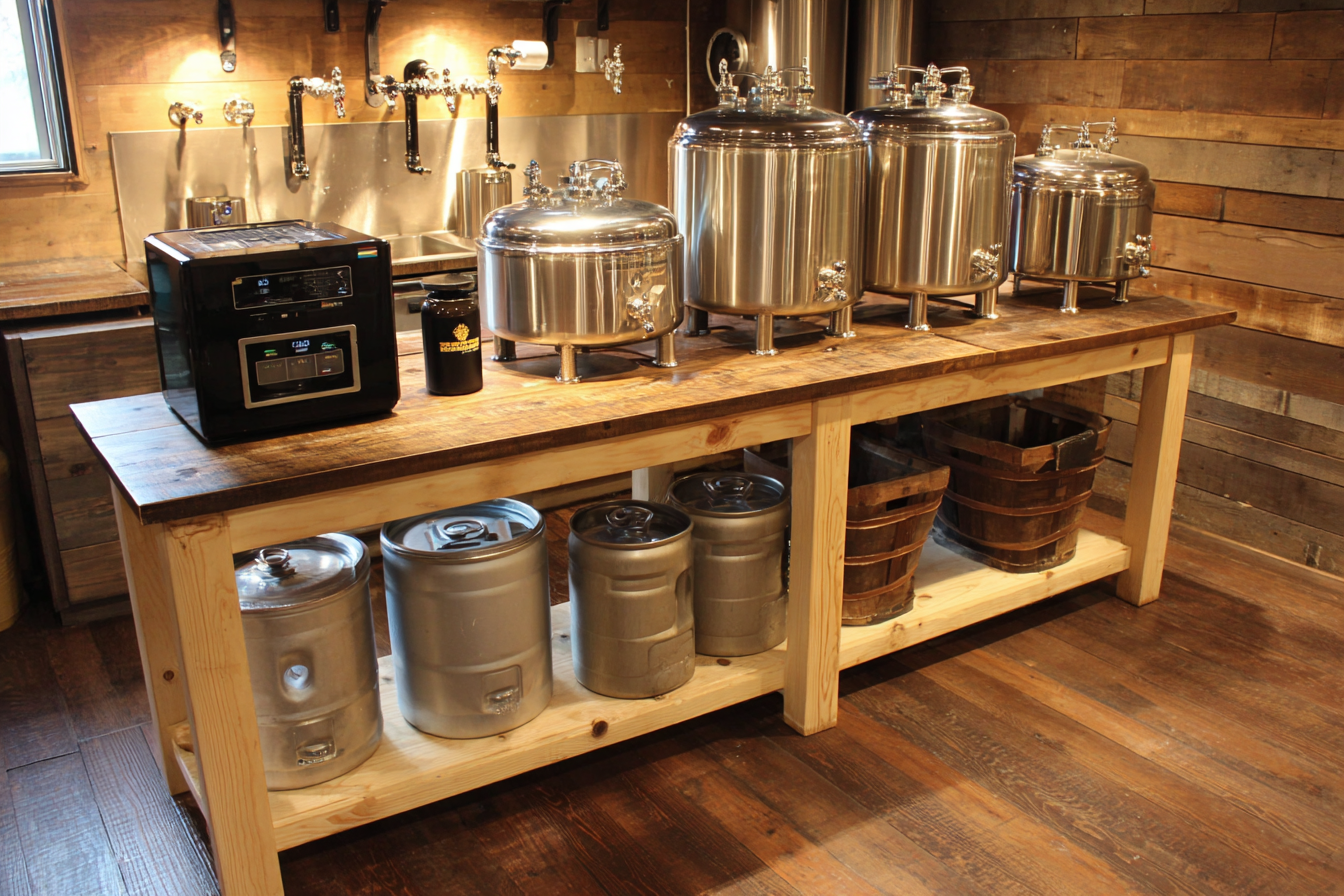Brewing your own Foreign Export Stout at home can be an incredibly rewarding experience. This bold, rich, and complex beer style offers layers of roasted malt flavors, subtle sweetness, and a smooth finish that stout lovers crave. Whether you’re a beginner or an avid homebrewer looking to expand your repertoire, having the right brewing equipment is crucial to crafting a high-quality Foreign Export Stout. The perfect blend of robust ingredients demands precise brewing methods and tools to ensure the best results. Let’s explore the essential equipment you’ll need to get started on brewing this iconic stout in your home brewery.
Essential Brewing Equipment for Homebrewing Foreign Export Stout
Before diving into the specifics, it’s important to understand that brewing a Foreign Export Stout is a multi-step process involving mashing, boiling, fermenting, and conditioning. Each of these stages requires specific equipment designed to handle the unique characteristics of stout brewing – such as thicker wort and longer fermentation times. Here is an overview of the core equipment categories essential for this journey:
- Mash tun and kettle
- Fermentation vessels
- Measuring and monitoring tools
- Cleaning and sanitizing gear
- Additional accessories for efficiency and quality control
Choosing the Right Mash Tun and Kettle
The mash tun is one of the single most important pieces of equipment in brewing a Foreign Export Stout. Since stouts are typically made using a higher proportion of roasted and specialty malts, the mashing process needs to efficiently extract sugars and flavors without scorching the grains. Insulated mash tuns with false bottoms or manifold systems allow for even water circulation, preventing hot spots and ensuring consistent conversion of starches to fermentable sugars.
Many homebrewers opt for stainless steel mash tuns because they’re durable, easy to clean, and maintain consistent temperatures well. If budget is a concern, a well-insulated cooler converted into a mash tun can also do the trick, though it may require more careful temperature monitoring.
When it comes to the kettle, a large, stainless steel brew kettle with at least a 7-10 gallon capacity is recommended. Stouts, especially foreign export varieties, are often brewed in larger batches to accommodate longer boil times that deepen flavor and caramelize malt sugars. A kettle with a built-in ball valve or spigot facilitates easier wort transfer and draining after the boil, and a kettle with a thick bottom helps avoid scorching, especially given the heavier malts used.
Fermentation Vessels Suitable for Stout Beers
Fermentation is where your stout develops its character, so having the right vessel is crucial. Glass carboys are popular among homebrewers for their inert surface and ease of cleaning, but they can be heavy and fragile. Plastic fermenters made from food-grade materials offer lightweight alternatives and often feature convenient sampling ports.
For Foreign Export Stouts, which may have longer fermentation and conditioning times, consider vessels with gas-tight seals and airlocks to prevent contamination while allowing CO2 to escape. Temperature control during fermentation is equally essential, since stouts benefit from cooler fermentations (around 60-68°F or 15-20°C) that help manage the beer’s profile and keep unwanted off-flavors to a minimum. Using temperature-controlled fermenting chambers or installing a fermentation fridge can greatly improve your results.
Measuring Tools: Hydrometers and Thermometers
Precision in homebrewing is achieved through careful monitoring of your beer’s gravity and temperature. A hydrometer is indispensable for measuring the specific gravity (SG) of your wort before and after fermentation. This tool helps you track sugar conversion, fermentation progress, and calculate the final alcohol content. Since Foreign Export Stouts often start with a high original gravity due to their malt-heavy recipes, accurate hydrometer readings ensure your brew is on track.
Temperature control starts with having reliable thermometers. Both digital probe thermometers and infrared thermometers are useful during mashing and fermentation stages. Accurate temperature readings allow you to maintain the ideal mash temperature (between 148-158°F or 64-70°C ideally) and keep fermentation conditions stable, which affects the beer’s flavor and mouthfeel. Consider investing in a few thermometers for different stages of the brewing process.
Cleaning and Sanitizing Equipment
Cleanliness is critical in brewing to avoid contamination and off-flavors. All your brewing equipment — mash tun, kettle, fermenters, spoons, siphoning tubes, and bottles — must be thoroughly cleaned and sanitized before and after use. Cleaning removes visible dirt and organic material, while sanitizing kills residual microbes that can spoil your stout.
Use brewery-grade cleaning agents like PBW (Powdered Brewery Wash) or similar alkaline cleansers for cleaning. Follow up with sanitizers such as Star San or iodophor, both of which are no-rinse sanitizers, ensuring your equipment remains sanitized without imparting strange tastes. Employ dedicated brushes and scrubbers for different equipment parts, replacing sponges often to prevent recontamination.
Tips for Scaling and Improving Equipment Efficiency
Once you’ve mastered small batch foreign export stout recipes, you might want to scale up your brewing efforts. When upgrading equipment sizes, consider:
- Bigger mash tuns: Larger tun capacities allow for bigger batch sizes, but make sure you have the space and heating power to maintain proper mash temperatures at scale.
- Automated temperature control: Investing in temperature-controlled heating elements or induction burners can make maintaining mash and boil temperatures easier and less hands-on.
- Efficient wort transfer: Using pumps or gravity-fed systems with ball valves reduce the risk of oxidation and off-flavors by limiting oxygen exposure during transfer.
- Improved fermentation control: Larger fermentation vessels with built-in thermowells and cooling jackets help maintain precise conditions for consistent stout character.
- Advanced monitoring tools: Consider digital refractometers and wireless temperature monitoring systems for real-time tracking and more precise data.
Above all, patience and consistent cleaning practices are key to maintaining a professional-level setup that delivers exceptional foreign export stouts batch after batch.
Preparing to Brew Your Foreign Export Stout
With the right equipment on hand, you’re ready to embark on the gratifying journey of brewing your own Foreign Export Stout. Understanding the role of each tool—from a reliable mash tun to precise measuring instruments—ensures you start with a strong foundation for outstanding beer quality. Pair your equipment investment with quality ingredients, good brewing techniques, and attention to detail, and you’ll soon be enjoying a distinctive rich, malty stout worthy of any beer enthusiast’s palate.
So gather your brewing gear, set your fermentation space, and prepare to craft a bold, flavorful Foreign Export Stout right in the comfort of your home or microbrewery. Happy brewing!







